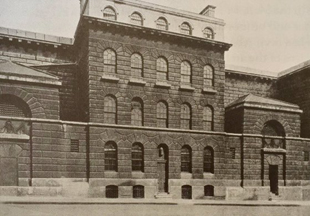The Diary of Jack the Ripper
The famous diary supposed to have been authored by James Maybrick certainly attracted a lot of attention when the manuscript was "discovered" in 1992. The story of the diary's origin is also quite mysterious, as the parties involved have changes their stories numerous times since the diary was made public. Despite the fact that the details of the diary are still being debated by experts of all types, many people still cite the diary as primary evidence against James Maybrick's guilt in the Jack the Ripper murders.There were four versions given as to how the diary, in which James Maybrick describes himself as Jack the Ripper, was first discovered:
1. The diary was discovered during renovations at Mike Barrett's home in 1992.
2. Mike Barrett was given the diary by a friend, Tony Devereux, while they were together in a pub in 1991.
3. Ann Barrett gave it to Tony Devereux, so that he could give it to her husband, Mike. She claimed that it had been in her family for years and she was hoping that her husband would write a book about the diary.
4. A year after the diary was publicised, Mike Barrett claimed that his wife, Ann, wrote the diary based on his dictation.
The diary was destined to be scrutinised extensively, but the lack of credibility in all parties involved due to changing stories, definitely placed a shadow of suspicion around the manuscript. After chemical and psychological analysis by numerous experts, including 100 delegates at the International Investigative Psychology Conference at Liverpool University, the journal is considered to be authentic in that it is indeed an old manuscript, however it is generally accepted that the diary was not written by the infamous Jack the Ripper.
Some interesting facts to shed light on the analysis of the journal:
• Even though the journal is old, the official opinions on exactly how old are inconclusive. The ink used to write the journal entries was analysed at least three times, and each time the ink ingredients were show to be different. Therefore, the inks could be as old at the 1860's or from as recently as the 1970's.
• There are historical inaccuracies within the diary entries. For example, the diary mentions a pub in Liverpool named the "Post House", but the pub had a different name at the time when the diary was supposed to have been written.
• Some handwriting experts suggest that the style of the script is more common in the 20th century than in the Victorian era.
• Despite the doubts as to the diary's authenticity, the head of the Liverpool University Centre for Investigative Psychology, Professor David Canter, was surprised at the amount of accuracy in the descriptions of the murders. He believes that it is "plausible" that the author of the journal, whether it can be scientifically proven, was also the author of the Whitechapel murders, now known as the Jack the Ripper murders.
Until definitive scientific tests can determine a specific date for this journal, experts are bound to continue to debate whether we can really use the entries to determine the true identity of Jack the Ripper. Even if the diary shouldn't be used to prove or disprove his guilt, James Maybrick will continue to be looked at as a suspect for the murders.







Comments
Mark A. Staup
22 Jul 2019 03:29These two should be "hanged" for such a hoax. MONEY, MONEY, MONEY is the root of EVIL with these type of greedy people who would perpetrate such an atrocity about such an EVIL TIME in the world. KICK THEM OUT OF THE U.K.
LESLIE OSBORN
09 Sep 2019 03:20Dear Sir
If the book has been checked and found to be of the time, the ink is correct, the paper also.
Why please explain why do not seem to believe this is a real document and does it not prove to be correct.
Kindest regards
Les Osborn
David King
31 Dec 2019 14:19Many dismiss the diary but to me it seems far more likely to be genuine than not. There is no satisfactory explanation as to how such a clever hoax, if it is a hoax, was done or by whom.